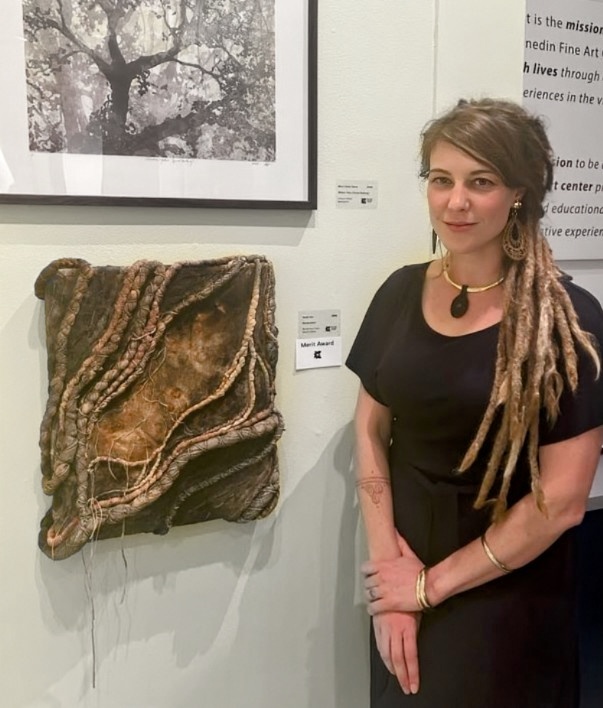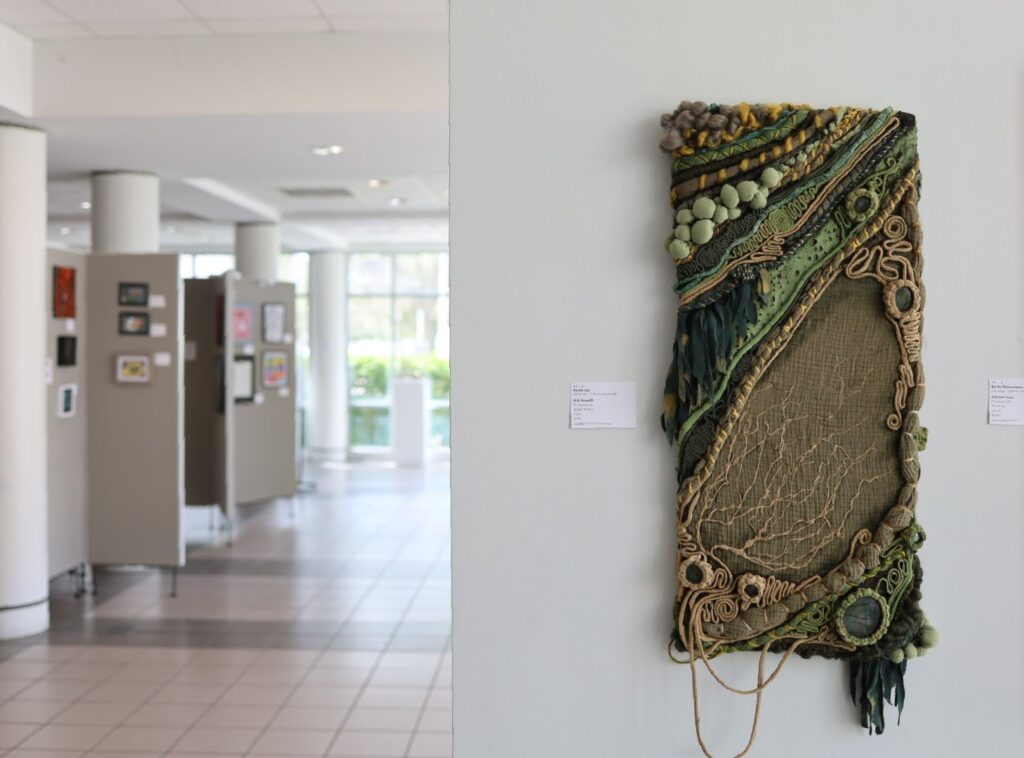If you’ve already read basic advice about how to price your art and still feel uncertain, this guide is for you. It’s a deeper dive into professional pricing practices that serious artists use when preparing for exhibitions, working with galleries, or building a sustainable career.
You’ll learn:
- How to choose the right pricing formula for your medium
- What index numbers are, and how they reflect your career stage
- How to price consistently across paintings, drawings, fiber, ceramics, photography, and more
- Where your work fits based on your experience, venue history, and professional goals
- How to identify your career stage
This guide expands on my existing post on basic pricing and moves into advanced, media-specific benchmarks that curators, gallerists, and collectors recognize.

Common Pricing Models Used by Professionals
1. Hourly Rate + Materials
Formula:
(Hours × Hourly Rate) + Materials + Fees = Base Price
Used by: ceramicists, sculptors, textile artists, labor-intensive media
Career Stage Suggested Hourly Rate
Student / Early $10–15/hr
Emerging $15–25/hr
Mid-Career $30–50/hr
Established $60–100+/hr
2. Square Inch Formula
Formula:
(Height × Width) × Rate = Price
Simple and scalable, but rarely used in fine art careers where conceptual and reputational value matter more than surface area. Better suited to commercial or decorative art.
3. Index Number Formula (Fine Art Standard)
Formula:
(Height + Width in inches) × Index Number = Price
The index number reflects your:
- Career stage
- Medium
- Presentation (framing, readiness)
- Venue history and visibility
- Professional reputation
Think of it as your rate per linear inch, adjusted over time to reflect growth.
What Is an Index Number?
An index number is a multiplier used in fine art pricing that connects your market position to the physical scale of your work. It’s one of the most transparent and scalable ways to show collectors that your prices are based on more than gut feeling.
It helps you:
- Price consistently across a body of work
- Scale prices with growth, exhibitions, and demand
- Speak the same language as galleries and collectors
- Avoid emotional guesswork
In publishing, writers earn a per-word rate. In fashion, designers price by complexity and brand value. In fine art, your price per inch is guided by your index number.
Suggested Index Number Ranges by Medium & Career Stage
Each table below includes four tiers: Student / Emerging / Mid-Career / Established. Where a tier is uncommon, a note is included.
Paintings (Acrylic, Oil, Watercolor, Mixed Media)
Career Stage Index Number
Student / Hobbyist 10–20
Emerging Artist 30–45
Mid-Career Artist 50–80
Established / Professional 100–300+
Drawings / Works on Paper (Graphite, Ink, Charcoal, Pastel)
Career Stage Index Number
Student / Hobbyist 3–10
Emerging Artist 12–25
Mid-Career Artist 30–50
Established Artist 60–120+
Lower base prices reflect common assumptions about fragility or casualness—but professional framing, scale, and concept can command much higher prices.
Fiber Art / Textile Sculpture / Installation
Career Stage Index Number
Student / Hobbyist Rare; start at 10–15
Emerging Artist 18–30
Mid-Career Artist 35–55
Established Artist 60–100+
Fiber art is less common in student sales, which is why this tier is rare. But professional presentation and conceptual clarity are essential at any stage.
Prints (Digital Fine Art / Archival Inkjet / Limited Editions)
Career Stage Index Number
Student / Hobbyist 5–8
Emerging Artist 10–15
Mid-Career Artist 18–25
Established Artist 30–40+
Edition size and paper quality impact price significantly. Smaller editions = higher prices.
Photography (Editioned, Archival Prints)
Career Stage Typical Price per Print
Student / Hobbyist $75–200
Emerging Photographer $250–600
Mid-Career Photographer $700–2,000
Established Photographer $2,500–10,000+
Photography is not typically priced with index numbers, but rather based on edition size, scale, rarity, and prestige. Archival quality and framing elevate price.
Ceramics (Sculptural or Functional)
Career Stage Typical Pricing Model
Student / Hobbyist Cost of materials + small markup
Emerging Artist Hourly rate ($15–25/hr)
Mid-Career Artist Hourly rate ($30–50/hr)
Established Artist Hourly rate ($60–100+/hr)
Ceramics pricing focuses on labor, form complexity, and surface treatment. Functional wares and fine art ceramics diverge significantly.
Assemblage / Mixed Media / Found Object Works
Career Stage Index Number
Student / Hobbyist 8–15
Emerging Artist 25–40
Mid-Career Artist 50–75
Established Artist 90–150+
Assemblage often uses a hybrid model: start with an index, then adjust based on 3D complexity and material sourcing.
Context Matters: Where You Show Affects What You Can Charge
Your index number should reflect your visibility and venue history, not just your skill.
Defining Career Stages for Pricing
Career Stage Description
Hobbyist / Student Learning stage. No solo shows. Selling to friends/family.
Emerging Artist Group shows, early juried exhibitions, starting sales, website/socials present. 0–2 solo shows.
Mid-Career Artist 3–6+ solo shows, strong exhibition record, some press or representation, defined artistic voice.
Established Artist Gallery representation, museum exhibitions, major awards, institutional collectors, national/international reputation.
Where you show is as important as how often. A solo show at a coffee shop isn’t the same as one at a museum.
Location and Market Matter
An index of 45 in rural Kansas may need to be 80 in Brooklyn or LA. Research other artists in your medium and region:
What are they charging?
Are their works framed, mounted, or editioned?
Are they selling in-person, online, or through galleries?
A collector should never feel like your pricing is arbitrary. Consistency = confidence..
Should You Raise Prices Over Time?
Yes — with growth comes value. But raise mindfully and consistently:
- Increase your index number annually (e.g. from 45 to 50)
- Raise prices after a major solo exhibition, residency, or press feature
- Never raise prices mid-edition (for prints)
Tips for Professional Pricing
- Price transparently (especially online)
- Keep records of what sold and at what price
- Don’t undercut your galleries or past buyers
- Consider framing, shipping, and platform fees in your base prices
- Avoid pricing based on emotion or attachment
Final Thoughts: Price Like You Mean It
Pricing isn’t just a number — it’s a declaration of value, effort, and commitment. Using a system like the index method shows you take your practice seriously — and invites others to take it seriously too.
The right curators, collectors, and collaborators will meet you at that level.

Leave a Reply